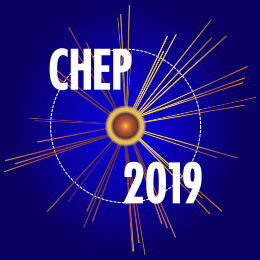Speaker
Description
The Heavy Photon Search (HPS) is an experiment at the Thomas Jefferson National Accelerator Facility designed to search for a hidden sector photon (A’) in fixed-target electro-production. It uses a silicon micro-strip tracking and vertexing detector inside a dipole magnet to measure charged particle trajectories and a fast lead-tungstate crystal calorimeter just downstream of the magnet to provide a trigger and to identify electromagnetic showers. The HPS experiment uses both invariant mass and secondary vertex signatures to search for the A’. The overall design of the detector follows from the kinematics of A’ production which typically results in a final state particle within a few degrees of the incoming beam. The occupancies of sensors near the beam plane are high, so high-rate detectors, a fast trigger, and excellent time tagging are required to minimize their impact and detailed simulations of backgrounds are crucial to the success of the experiment. The detector is fully simulated using the flexible and performant Geant4-based program "slic" using the xml-based "lcdd" detector description (described in previous CHEP conferences). Simulation of the readout and the event reconstruction itself are performed with the Java-based software package "hps-java." The simulation of the detector readout includes full charge deposition, drift and diffusion in the silicon wafers, followed by a detailed simulation of the readout chip and associated electronics. Full accounting of the occupancies and trigger was performed by overlaying simulated beam backgrounds. HPS has successfully completed two engineering runs and will complete its first physics run in the summer of 2019. Event reconstruction involving track, cluster and vertex finding and fitting for both simulated and real data will be described. We will begin with an overview of the physics goals of the experiment followed by a short description of the detector design. We will then describe the software tools used to design the detector layout and simulate the expected detector performance. Finally, the event reconstruction chain will be presented and preliminary comparisons of the expected and measured detector performance will be presented.
| Consider for promotion | No |
|---|




